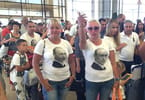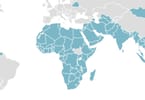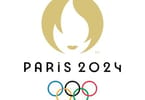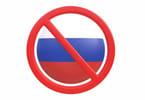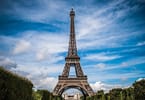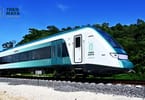The State of Hawaii issued a health warning to avoid all non-essential travel. When I arrived in Hawaii in early December, I knew nothing about COVID-19; I also didn’t know when I would return to Detroit, so I purchased one-way travel. Now, let me tell you how the 500-Mile Rule Saved Me Over $1,000.
I use a little-known method to purchase flights: buy multiple tickets that cost less than one ticket from point A to B. For example, flights in and out of Toronto cost up to 75 percent less than flights leaving Detroit. So, I bought one ticket to Toronto, gave myself an international layover, then bought a second ticket from Toronto to Honolulu. It was cheaper to fly in first class by doing an international layover in Canada than buying one ticket from Detroit to Honolulu in coach class.
Tickets are not priced by mileage they are priced by supply and demand. My rule of thumb for coach is to purchase when the price is less than 5 cents per mile. My rule of thumb for first class is only fly in an aircraft that has lie-flat bed seats like a 777 or 787.
I always use alternative airports when possible. I’ve been on 54 cruises. I fly into Broward County/Fort Lauderdale (which is $18 today from Detroit) then take tri-rail as a disabled person to the Miami Airport if the ship departs from Dade County. Currently, tri-rail is free for disabled people. I see flights from Detroit to Miami for as much as $300, but Fort Lauderdale is often 75% cheaper. If I cruise from Port Everglades, the airport and the cruise port are practically next-door neighbors.
After I arrived in Hawaii last year, I began searching for tickets back to Detroit. Again, it was about 75% cheaper to fly to Toronto, stay a few days, and buy a second ticket from Toronto to Detroit. The cost for 2 completely separate tickets in first class was cheaper than Honolulu-Detroit in coach.
COVID-19 came, and my physicians said, “Don’t travel on an airplane until after May.” I have muscular dystrophy and diabetic kidney failure, so it’s too dangerous for non-essential travel. In the wake of COVID-19, United cut way back on its international flights. I had a flight non-stop from San Francisco to Toronto. My new itinerary wound up being a weird string of flights that had 5 legs. I didn’t like the flights United chose for me. Additionally, there was an unforeseen snafu transiting through Canada.
I’m married to an Italian and only Canadians, Canadian residents, and Americans are currently admitted to Canada. Italians are not welcomed for non-essential travel. I called United to change my dates from April to May, plus it avoids Canada. They put me on a nonstop from Honolulu to Chicago, then erased my flight segment to Toronto. United informed me I was to pay them $329 per person ($658 per couple) for the privilege of getting off the plane in Chicago (rather than continue to Toronto). They said they would do an even swap for the second ticket from Toronto to Detroit. I had paid $229.69 first class per person (totaling $459.38) for my second ticket.
I told United Airlines “No, I don’t want to pay you $658, I want you to give me $459.38.” This kind of ruffled their feathers.
Since my flight from San Francisco to Toronto was cancelled, I was able to take advantage of the 500-mile rule. When a flight gets interrupted, and it’s the airline’s fault, airlines typically follow the rule allowing the passenger to fly to an alternate airport that is within 500 miles of your original destination – without paying a change fee or paying any additional fare cost (the 500-Mile Rule). Even if it costs hundreds of dollars more to get you to your destination, you don’t have to pay it. The hook was United cancelled San Francisco to Toronto, and that was their doing not mine.
I told United instead of flying me to Toronto, put me on a 777 with a lie-flat bed from Honolulu to Chicago, then swap Toronto for Detroit, because it’s within 500 miles, then give me back all my money for the second ticket. The difference between paying United $658 (add/collect) versus receiving a refund credit of $459.38 (for my second ticket) totals $1,117.38. The 500-mile rule saved me over a thousand dollars. Would you believe 6 employees at United did not know the rule existed until I insisted on the rates being calculated in my favor?
My devotion to using alternate airports saves me a ton of money. Splitting the flight into separate cheap tickets increases your chances an airline will make a flight change that allows you to swap itineraries to your benefit. I recommend all my friends to string cheap flight segments together like a lei to form your round trip. It’s a logic puzzle, but what else are you going to do if you are quarantined or sheltered at home for a month?
You can read United’s re-booking rules at https://www.united.com/web/en-US/content/agency/bookticket/rebooking-parameters.aspx
WHAT TO TAKE AWAY FROM THIS ARTICLE:
- I told United instead of flying me to Toronto, put me on a 777 with a lie-flat bed from Honolulu to Chicago, then swap Toronto for Detroit, because it's within 500 miles, then give me back all my money….
- Again, it was about 75% cheaper to fly to Toronto, stay a few days, and buy a second ticket from Toronto to Detroit.
- When a flight gets interrupted, and it's the airline's fault, airlines typically follow the rule allowing the passenger to fly to an alternate airport that is within 500 miles of your original destination –.




